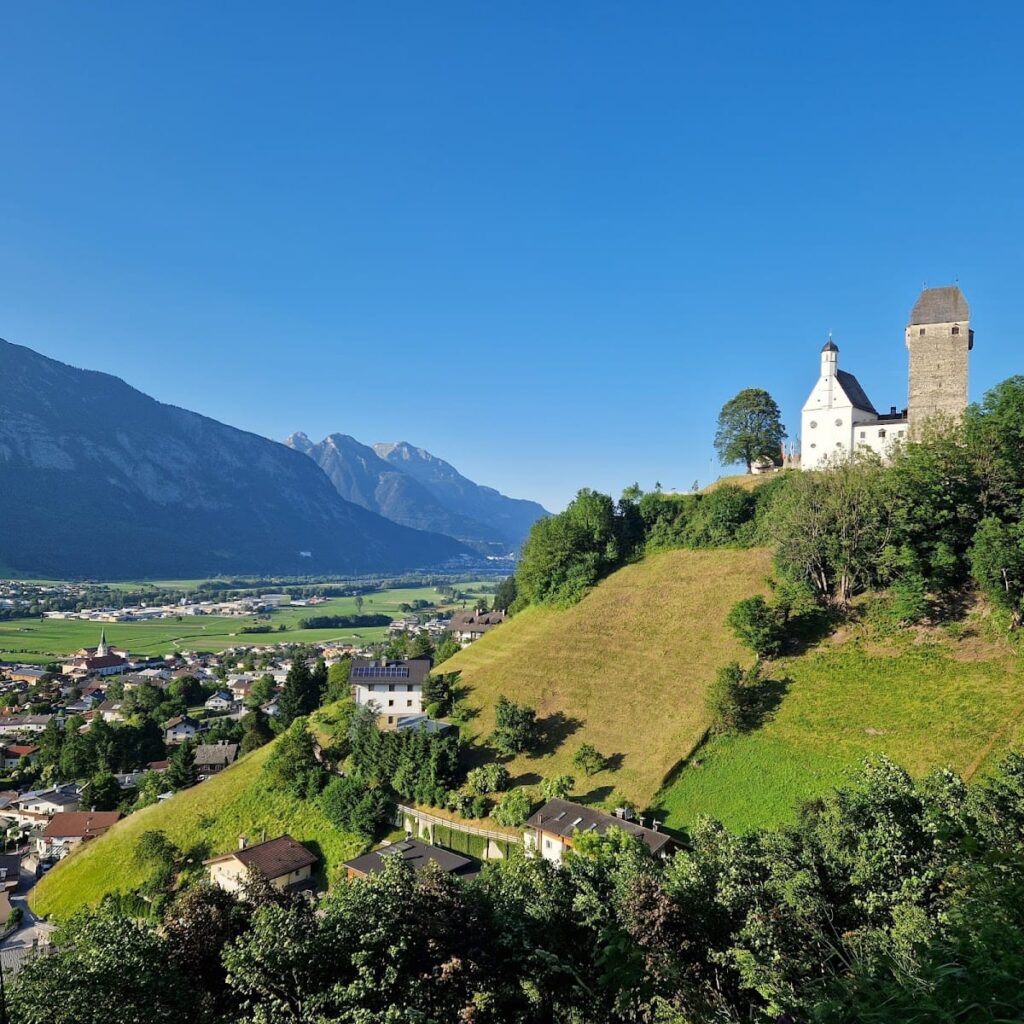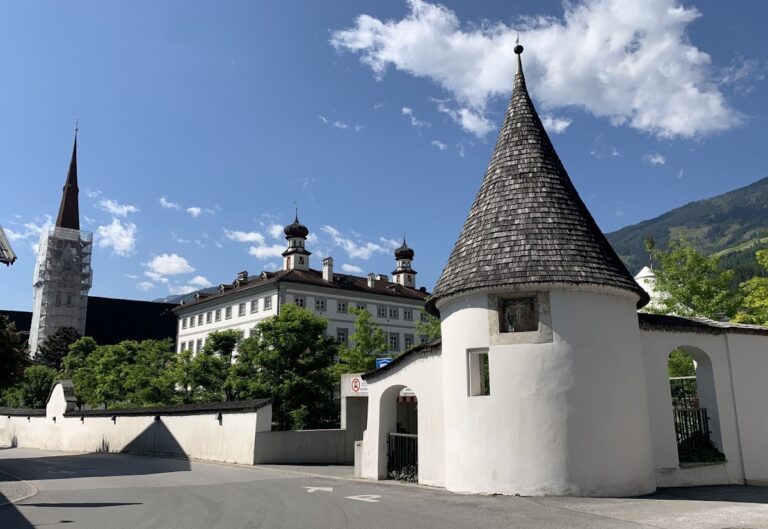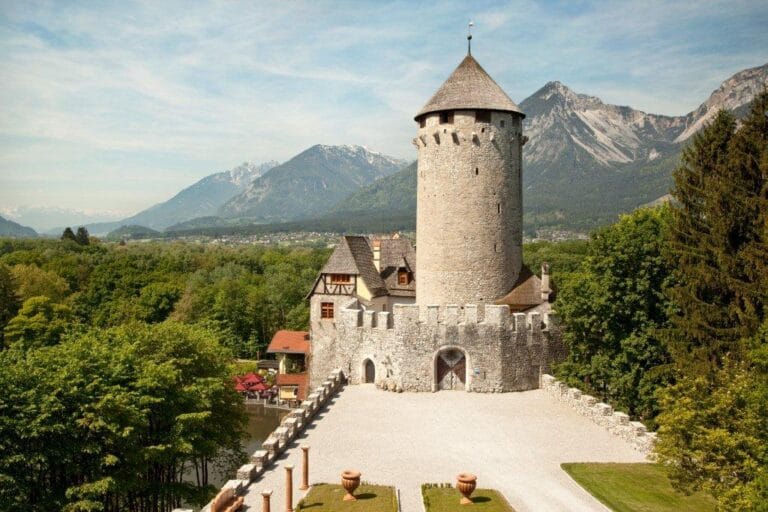Burg Freundsberg: A Historic Castle and Museum in Schwaz, Tyrol
Visitor Information
Google Rating: 4.7
Popularity: Low
Google Maps: View on Google Maps
Official Website: freundsberg.com
Country: Austria
Civilization: Medieval European
Remains: Military
History
Burg Freundsberg stands on a steep hill about 170 meters above the Inn valley near Schwaz, Tyrol. It was established in 1150 by the aristocratic Freundsberg family, who built the original structure as a five-story residential tower. This tower formed the core of the castle and remains preserved today. In 1176, the first chapel within the castle was consecrated by Archbishop Conrad of Mainz, a papal legate, and was dedicated to the Holy Cross and Saint Mary.
In 1467, ownership of the castle passed to Archduke Sigismund of Austria. He undertook significant rebuilding efforts and temporarily renamed the castle Sigmundsruh, also recorded as Siegmundsfried. This period marked a transformation in the castle’s role and appearance, reflecting the archduke’s influence.
Between 1634 and 1637, a late Renaissance court church was constructed within the castle grounds, adding a new religious and architectural element to the complex. Over the following centuries, the castle changed hands several times before the city of Schwaz acquired it in 1812. Restoration work began in 1966 to preserve the structure and its historical features.
Since 1948, the castle’s keep has served as a local history museum. It documents Schwaz’s development and the region’s silver mining industry. Before this, Schwaz’s first city museum opened in 1930 on Innsbrucker Straße and later moved to Burg Freundsberg, linking the castle closely to the town’s cultural heritage.
Remains
The castle’s central feature is its original five-story residential tower, which rises 28 meters high. This tower retains fragments of its original frescoes on the interior walls, offering a glimpse into medieval decoration. The tower’s sturdy construction and height make it a prominent landmark visible from the Inn valley below.
The chapel dedicated to the Holy Cross and Saint Mary, consecrated in 1176, was part of the initial castle complex. Later, between 1634 and 1637, a late Renaissance-style court church was added, reflecting changes in architectural style and religious practice within the castle grounds.
Above the entrance to the Holy Sepulchre Chapel, the alliance coat of arms of Joseph Anton Ignaz Graf von Tannenberg and his wife Maria Anna Leopoldine Josepha Theresia Gräfin von Starhemberg is displayed. This heraldic emblem highlights noble family connections associated with the castle.
Restoration efforts that began in 1966 have preserved many structural and decorative elements of the castle. Today, the keep remains intact and houses museum exhibits related to Schwaz’s history and its silver mining heritage, maintaining the castle’s historical and cultural significance.










